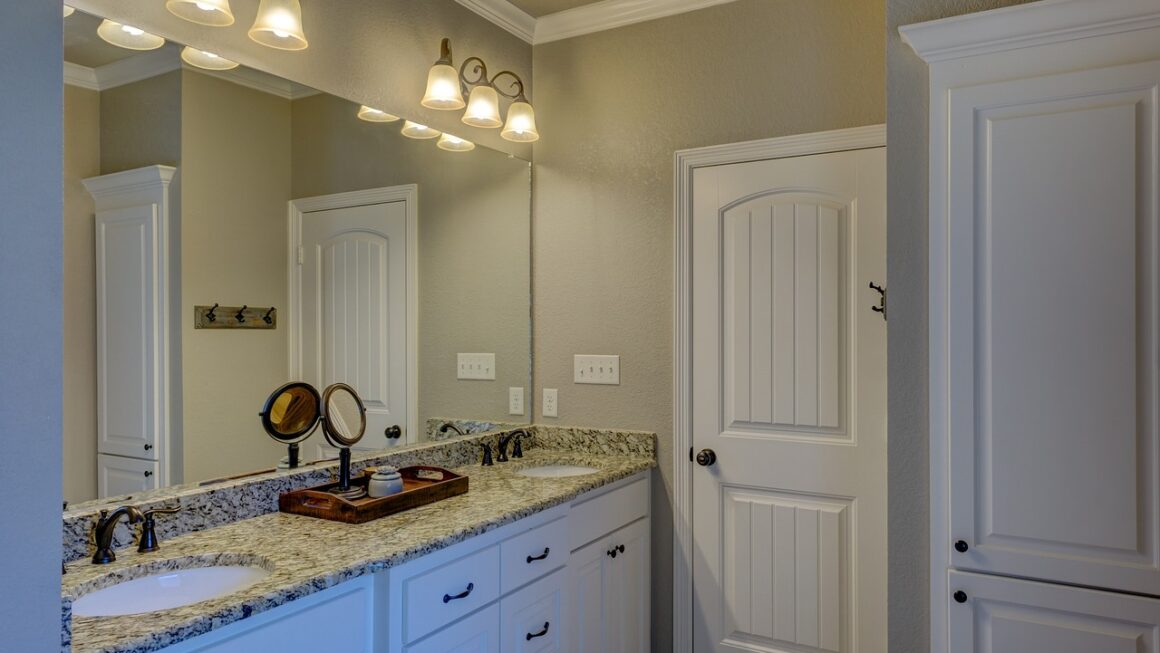Smart bulbs have revolutionized home lighting, offering unparalleled control, energy savings, and convenience. Imagine dimming your lights with a voice command, setting the mood with a customized color palette, or even automating your lighting schedule while you’re away from home. These once futuristic features are now readily available and surprisingly affordable, making smart bulbs a must-have for any modern home. This guide will explore the ins and outs of smart bulbs, helping you understand their benefits, choose the right options for your needs, and integrate them seamlessly into your smart home ecosystem.
Understanding Smart Bulbs: The Basics
Smart bulbs are more than just light sources; they are miniature computers that communicate wirelessly with your home network. This connectivity unlocks a world of possibilities beyond simple on/off functionality.
How Smart Bulbs Work
- Connectivity: Smart bulbs primarily use Wi-Fi or Bluetooth to connect to a hub or directly to your home network. Wi-Fi bulbs typically don’t require a separate hub, while Bluetooth bulbs often rely on a hub for remote control and advanced features. Zigbee and Z-Wave are other protocols that require a hub but offer greater range and reliability.
- Control: You can control smart bulbs through smartphone apps, voice assistants (like Amazon Alexa, Google Assistant, and Apple Siri), or even dedicated smart home hubs.
- Functionality: Beyond basic on/off and dimming, smart bulbs offer a range of features, including color changing, scheduling, and integration with other smart home devices.
Types of Smart Bulbs
- Wi-Fi Bulbs: Connect directly to your home Wi-Fi network. These are generally easy to set up and don’t require a hub.
Example: TP-Link Kasa Smart Bulbs
- Bluetooth Bulbs: Connect via Bluetooth. They often require a hub for remote control and advanced features, but can offer simpler setup in some cases.
Example: Sengled Smart Bluetooth Mesh Bulbs
- Zigbee and Z-Wave Bulbs: These require a compatible hub (like a Samsung SmartThings or Hubitat Elevation) but often offer better range, reliability, and energy efficiency.
Example: Philips Hue bulbs (Zigbee)
Benefits of Using Smart Bulbs
Smart bulbs offer a multitude of advantages compared to traditional incandescent or even LED bulbs.
Energy Efficiency and Cost Savings
- Lower Energy Consumption: Smart bulbs are typically LED-based, consuming significantly less energy than incandescent bulbs. Replacing traditional bulbs with smart LED bulbs can lead to substantial energy savings over time.
- Dimming Capabilities: Dimming your lights not only sets the mood but also reduces energy consumption. Smart bulbs allow for precise dimming control.
- Scheduling and Automation: Set your lights to turn on and off automatically based on a schedule or even based on sunrise and sunset times. This eliminates wasted energy from leaving lights on unnecessarily.
Example: Setting your outdoor lights to turn on automatically at dusk can increase security and convenience while minimizing energy waste.
Enhanced Control and Convenience
- Remote Control: Control your lights from anywhere with a smartphone app. This is especially useful when traveling or ensuring your home looks occupied.
- Voice Control: Control your lights with simple voice commands using Amazon Alexa, Google Assistant, or Apple Siri.
Example: “Alexa, turn off the living room lights.”
- Customization: Adjust brightness, color temperature (warm to cool white), and even color to create the perfect ambiance for any occasion.
Example: Set your lights to a warm, relaxing color temperature in the evening to promote better sleep.
Security and Automation
- Deterrent to Burglary: Schedule your lights to turn on and off randomly while you’re away to make your home appear occupied.
- Integration with Security Systems: Integrate your smart bulbs with your home security system to automatically turn on lights when motion is detected.
- Smart Home Integration: Integrate your smart bulbs with other smart home devices, such as sensors and thermostats, to create automated scenes and routines.
* Example: Create a “movie night” scene that dims the lights, closes the blinds, and turns on the TV with a single command.
Choosing the Right Smart Bulbs
Selecting the right smart bulbs for your home depends on several factors, including your budget, desired features, and existing smart home ecosystem.
Considerations Before Buying
- Compatibility: Ensure the smart bulbs are compatible with your existing smart home hub or voice assistant.
- Brightness and Color Temperature: Consider the brightness (lumens) and color temperature (Kelvin) you need for each room. Higher lumens equate to brighter light, while lower Kelvin values provide a warmer, more yellow light.
- Bulb Type and Shape: Choose the correct bulb type (e.g., A19, BR30, PAR38) and shape to fit your existing fixtures.
- Price: Smart bulb prices can vary widely. Compare prices and features to find the best value for your needs.
- Hub vs. No Hub: Decide if you want bulbs that connect directly to Wi-Fi or ones that require a hub. Hub-based systems offer better reliability and scalability, but require an initial investment in a hub.
Popular Smart Bulb Brands
- Philips Hue: Known for their high quality, wide range of products, and excellent integration with other smart home systems. They use the Zigbee protocol and require the Hue Bridge.
- TP-Link Kasa: Offers affordable Wi-Fi smart bulbs that are easy to set up and control.
- Lifx: Provides bright, colorful Wi-Fi smart bulbs with no hub required.
- Sengled: Offers a variety of smart bulbs, including Bluetooth and Zigbee options, at competitive prices.
- GE Cync (formerly C by GE): Offers a range of smart bulbs that connect directly to Wi-Fi or through Bluetooth.
Setting Up and Troubleshooting Smart Bulbs
Setting up smart bulbs is generally straightforward, but here are some tips and troubleshooting steps to ensure a smooth experience.
Setup Process
Troubleshooting Common Issues
- Bulb Won’t Connect: Ensure your Wi-Fi network is working properly. Check the bulb’s compatibility with your router. Try resetting the bulb by turning it off and on rapidly several times.
- Bulb Disconnects Frequently: Check the Wi-Fi signal strength in the bulb’s location. Consider using a Wi-Fi extender to improve coverage. If using a hub, make sure the hub is placed in a central location.
- Voice Control Not Working: Ensure your voice assistant is properly configured and linked to your smart bulb account. Check the bulb’s name in the app to ensure it’s spelled correctly and easy for the voice assistant to understand.
Conclusion
Smart bulbs offer a compelling blend of energy efficiency, convenience, and enhanced control over your home lighting. From saving money on energy bills to creating the perfect ambiance for any occasion, smart bulbs can significantly improve your quality of life. By understanding the different types of smart bulbs, their benefits, and the key considerations for choosing the right ones, you can transform your home into a smart, comfortable, and energy-efficient living space. So, take the plunge and experience the transformative power of smart lighting – you won’t be disappointed!




